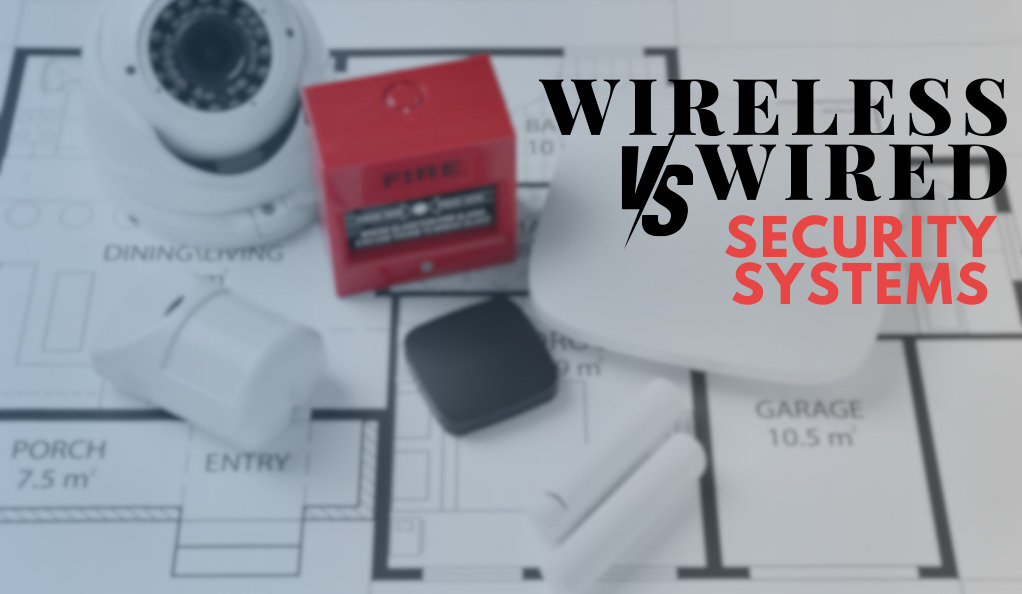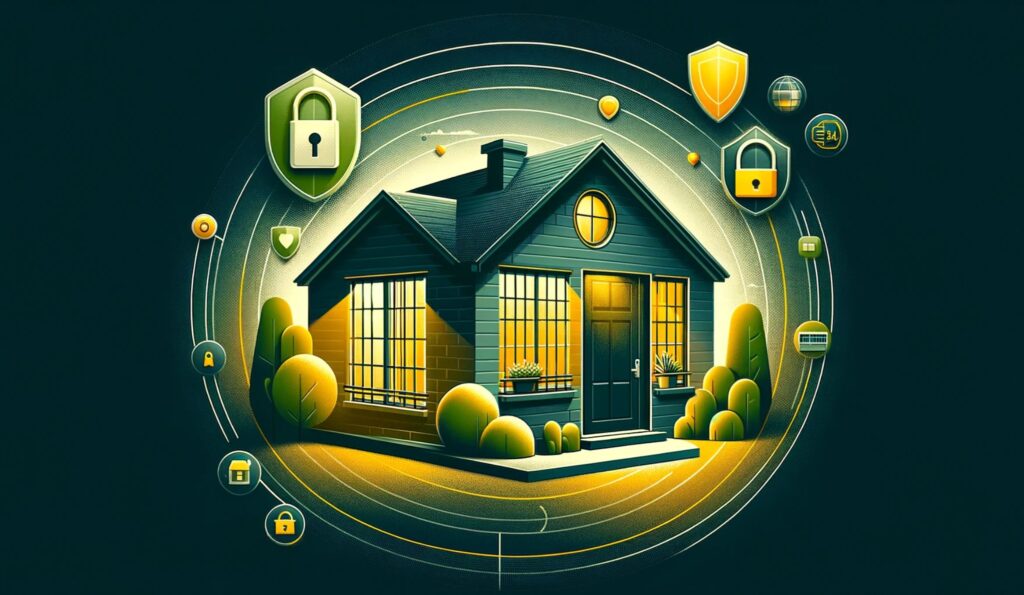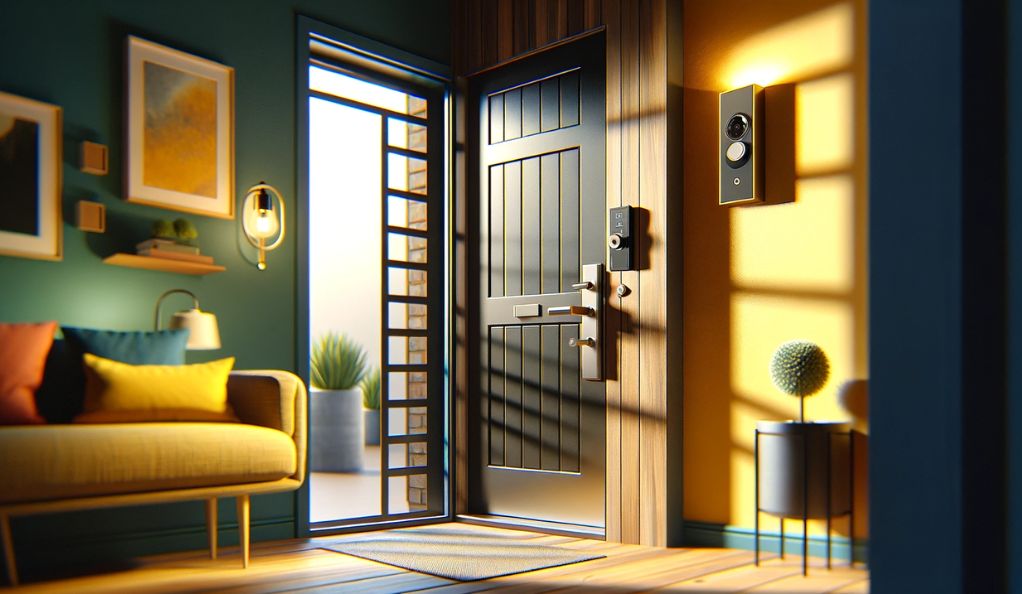In the realm of home security, ensuring the safety of one’s residence and loved ones is paramount. Over the years, technology has offered homeowners a plethora of choices, with security systems evolving rapidly to meet modern challenges and preferences. As we stand at the crossroads of technological advancement, two primary contenders emerge in the home security sector: wired and wireless security systems. Each comes with its own set of features, benefits, and drawbacks. The choice between them isn’t merely about picking the newest or the most popular but about understanding which system aligns best with the unique requirements of your home and lifestyle.
A Brief Glimpse into the Evolution of Home Security
Historically, home security was primarily about physical barriers like walls, gates, and locks. With the advent of electricity, wired alarm systems came into play, using circuits and sensors to detect breaches. These systems, although rudimentary, provided an added layer of security by sounding alarms when a window or door was opened without deactivation.

Fast forward to the digital age, and we witness the advent of wireless security systems. These modern marvels leverage wireless signals and internet connectivity to provide real-time surveillance, remote access, and a slew of other advanced features. The shift from wired to wireless isn’t just a technological leap but also a response to the changing dynamics of our lifestyles, where flexibility, adaptability, and smart integrations have become crucial.
| Type | Era | Primary Features | Usage |
|---|---|---|---|
| Physical Barriers | Pre-electricity | Walls, Gates, Locks | Primary defense against intruders |
| Wired Security Systems | Electrical Age | Circuits, Sensors, Alarms | Detect breaches, sound alarms |
| Wireless Security Systems | Digital Age | Wireless Signals, Cameras, Smart Integrations | Real-time surveillance, remote access |
As we delve deeper into the intricacies of both wired and wireless systems, our goal is to equip you with comprehensive knowledge. By the end of this exploration, you’ll be poised to make an informed decision, ensuring that your choice not only fortifies your home but also seamlessly integrates with your daily life.
Understanding Wired Security Systems
Wired security systems have been the industry standard for many years. Relying on a network of physical cables and sensors, these systems offer a robust and consistent approach to home protection. Let’s dive into the mechanics and implications of opting for a wired setup.

How Wired Security Systems Work
At the heart of every wired security system lies a control panel, often referred to as the brain of the operation. This panel connects to various sensors placed around the home, such as door and window sensors, motion detectors, and sometimes even surveillance cameras. When a sensor detects a breach, it sends a signal to the control panel, which then triggers an alarm, alerting homeowners and, in some cases, security companies or local authorities.
Key Features and Components
- Control Panel: The central hub that communicates with all the sensors and alarms.
- Sensors: Devices placed at various entry points like doors and windows to detect unauthorized access.
- Motion Detectors: These can identify movement within the house, especially useful for larger properties or secluded areas.
- Surveillance Cameras (optional): Offer visual monitoring of the premises, recording footage for evidence or real-time viewing.
- Alarm: Sounds off when a breach is detected, deterring potential intruders and alerting occupants.
Advantages of Wired Systems
- Reliability and Consistency: With physical connections, there’s less risk of signal loss or interference, ensuring consistent performance.
- Less Susceptibility to Interference: External devices or other wireless networks are less likely to disrupt the system’s functionality.
- Longer Lifespan: Components of wired systems, especially the sensors, often have a longer operational life.
Disadvantages of Wired Systems
- Installation Complexities: Setting up a wired system often requires professional installation, which might involve drilling holes and running cables through walls.
- Difficulties in Relocating: If you plan to move, transferring a wired system to a new home can be cumbersome and sometimes impractical.
- Aesthetic Concerns: Visible wires can be unsightly and might not blend well with modern home interiors.
When evaluating wired security systems, it’s crucial to weigh these pros and cons against your specific needs, home layout, and personal preferences. While wired systems have served many homeowners reliably for years, the rise of wireless alternatives offers a fresh perspective on home security solutions.
Diving into Wireless Security Systems
The modern age has ushered in a wave of technological advancements, and security systems haven’t been left behind. Wireless security systems, with their flexibility and adaptability, have become increasingly popular among homeowners, especially those who value smart integrations and remote access. Let’s unpack what makes these systems tick.
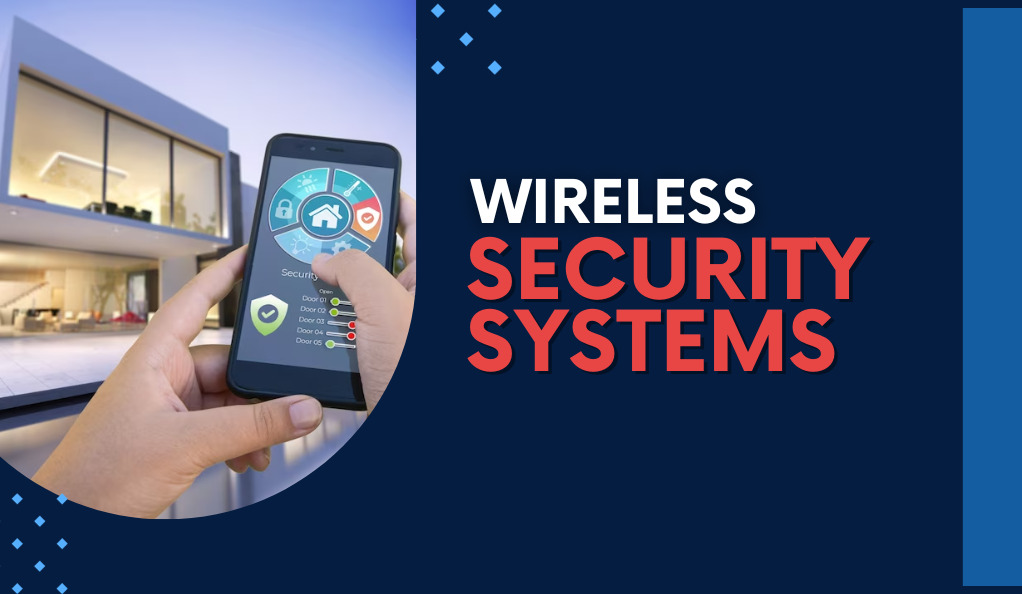
The Mechanics Behind Wireless Security
Instead of relying on physical wires to connect sensors and alarms, wireless security systems use radio frequency (RF) signals or Wi-Fi connections. The control panel communicates wirelessly with each sensor. When a breach is detected, the sensor sends a signal back to the control panel, which then takes the appropriate action, whether sounding an alarm or sending a notification to the homeowner’s smartphone.
Key Features and Components
- Control Panel: The wireless hub that communicates with sensors and other connected devices.
- Sensors: Like their wired counterparts, these are placed at entry points but communicate without cables.
- Motion Detectors: Detect any unauthorized movement in the house, offering an added layer of security.
- Surveillance Cameras: Often Wi-Fi-enabled, these cameras allow homeowners to monitor their property in real-time from anywhere.
- Smartphone Integration: Many wireless systems offer apps that let homeowners control and monitor their security from their phones.
Advantages of Wireless Systems
- Easier Installation and Flexibility: Without the need for cables, installation becomes a DIY possibility, and systems can be easily expanded.
- Remote Access and Smart Home Integrations: Modern wireless systems often integrate seamlessly with smart home devices, allowing for remote monitoring and control.
- Portability: If you move homes, taking your wireless system with you is far more straightforward than a wired system.
- Aesthetically Pleasing: No visible wires mean a cleaner look that blends seamlessly with home decor.
Disadvantages of Wireless Systems
- Vulnerability to Signal Interference: Other devices or networks might occasionally disrupt the wireless signals.
- Battery Dependencies: Since they aren’t powered by direct electrical connections, batteries need regular checking and replacement.
- Potential Security Concerns: Without proper encryption and security measures, wireless systems can be vulnerable to hacking.
Choosing a wireless security system often aligns with a desire for modernity, flexibility, and integration with other smart devices. However, it’s essential to be aware of potential challenges and ensure that the chosen system meets rigorous security standards.
Cost Implications
Budget is a significant factor for most homeowners when deciding on a security system. Both wired and wireless setups come with their own set of costs, from installation to maintenance. Here, we’ll break down the financial aspects associated with each type to help you gauge which one aligns with your financial expectations and constraints.
Initial Setup Costs
- Wired Systems: These often come with a higher initial cost. The components themselves might be moderately priced, but the professional installation, which might involve intricate wiring and drilling, can add to the expense.
- Wireless Systems: Generally, these systems are more affordable to start with. Many kits are designed for DIY installation, eliminating the need for professional setup. However, top-tier wireless systems with advanced features can be pricier.
Maintenance and Potential Upgrade Expenses
- Wired Systems: Once installed, wired systems usually have minimal maintenance costs. The primary expenses might arise from occasional system checks or sensor replacements. Upgrades can be more complex and potentially costly, given the wired infrastructure.
- Wireless Systems: Battery replacements for sensors can be a recurring cost. Additionally, as technology evolves, you might find yourself wanting to upgrade to newer devices or features, leading to additional expenses. However, the modular nature of these systems often makes upgrades easier and sometimes more affordable.
Long-term Value for Money
- Wired Systems: With their durability and long lifespan, wired systems can offer excellent value over the years. The initial investment pays off as the system reliably functions with minimal disruptions.
- Wireless Systems: While there might be more frequent updates and potential component replacements, the flexibility and adaptability of wireless systems can offer value in terms of convenience and modern features.
Integration with Smart Home Devices
The modern home is becoming increasingly interconnected, with various devices working in tandem to provide convenience and efficiency. How do security systems fit into this ecosystem?
Wired Systems:
Traditionally, wired systems operated independently of other home devices. However, recent advancements have seen some wired systems offering integration with smart home hubs or devices, though the compatibility range might be limited.
Wireless Systems:
These naturally lend themselves to integration with other smart devices. Whether it’s voice-controlled assistants like Alexa or Google Assistant, smart lighting, or HVAC systems, wireless security setups can often be part of a holistic smart home environment. This interconnectedness allows for functionalities like turning on lights when a breach is detected or adjusting thermostats based on occupancy sensors.
Reliability and Safety Concerns
No matter how advanced or feature-rich, a security system’s primary role is to safeguard. Let’s address the reliability and potential vulnerabilities of both systems.
Wired Systems:
Their physical connections often make them less susceptible to external interference. However, they can be vulnerable to physical tampering, like cutting wires. Power outages, unless there’s a backup power source, can also render the system inactive.
Wireless Systems:
While they offer the convenience of remote access and adaptability, they can be prone to signal interference. Moreover, without proper security measures, there’s a risk of cyber-attacks or hacking. It’s crucial to ensure robust encryption and regular software updates to keep potential threats at bay.
Making the Right Choice: Factors to Consider
Choosing between wired and wireless security systems is not a one-size-fits-all decision. It’s crucial to understand that what works for one household might not be the best fit for another. Let’s explore the key factors that can guide you in making an informed choice tailored to your unique circumstances.
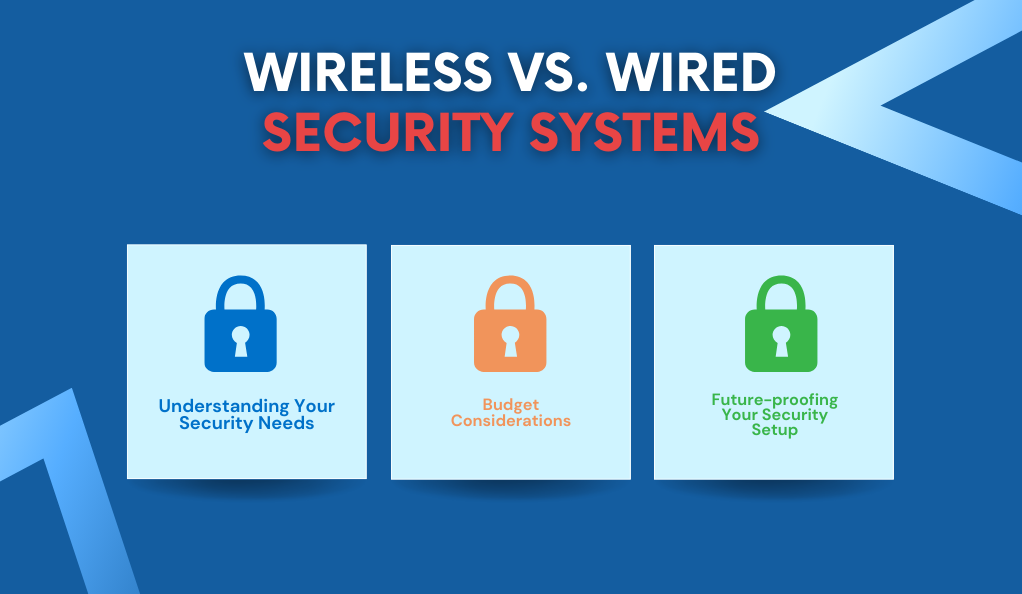
Assessing Your Home’s Layout and Structure
- Wired Systems: If your home is spacious with multiple levels or has intricate architectural features, installing a wired system might be more challenging. Older homes, especially those with solid walls or limited access points, can also pose installation hurdles.
- Wireless Systems: These are often ideal for homes where drilling and extensive wiring are impractical. Whether it’s a rental apartment, a historic property, or a modern minimalist design, wireless systems can be integrated with relative ease.
Understanding Your Security Needs
- Wired Systems: If you’re looking for a long-term solution with minimal maintenance and are okay with a more extensive installation process, a wired system might be the way to go. They are especially suitable for properties that require a comprehensive security network, such as large estates or commercial spaces.
- Wireless Systems: For those who value flexibility, portability, and smart integrations, wireless is a strong contender. If you foresee relocating or frequently updating your tech, this system offers the adaptability you might need.
Budget Considerations
It’s essential to not only consider the initial costs but also think about long-term expenses. While wired systems might have a heftier upfront price tag, they might prove more economical in the long run. On the other hand, wireless systems, with potential regular upgrades and battery replacements, could have recurring costs.
Future-proofing Your Security Setup
The technological landscape is ever-evolving.
- Wired Systems: While they offer stability, upgrading them can be more complex. However, some modern wired systems now come with features that allow for easier updates.
- Wireless Systems: These are inherently more adaptable to technological advancements. With the rapid development in the IoT (Internet of Things) space, wireless security systems are poised to integrate seamlessly with future smart devices and functionalities.
Conclusion
The journey through the realm of home security, exploring both wired and wireless systems, reveals a landscape rich in options, each with its distinct advantages and challenges. Safety, undoubtedly, is a paramount concern for every homeowner. However, in today’s rapidly advancing technological age, the definition of security encompasses not just protection but also convenience, adaptability, and future readiness. While wired systems offer the robustness and reliability of time-tested technology, wireless systems respond to the call for flexibility and integration in our increasingly interconnected world.
Making an informed choice between these systems is not merely about selecting the most advanced or the most popular option. It’s about understanding the unique needs of one’s home, the nuances of one’s lifestyle, and envisioning how one wants their security to evolve in the coming years. As we stand at this crossroads of decision-making, it’s essential to reflect on what we value most – be it the stability of traditional systems or the promise of future adaptability. In the end, the best choice is one that offers peace of mind today and confidence in the security of tomorrow.

